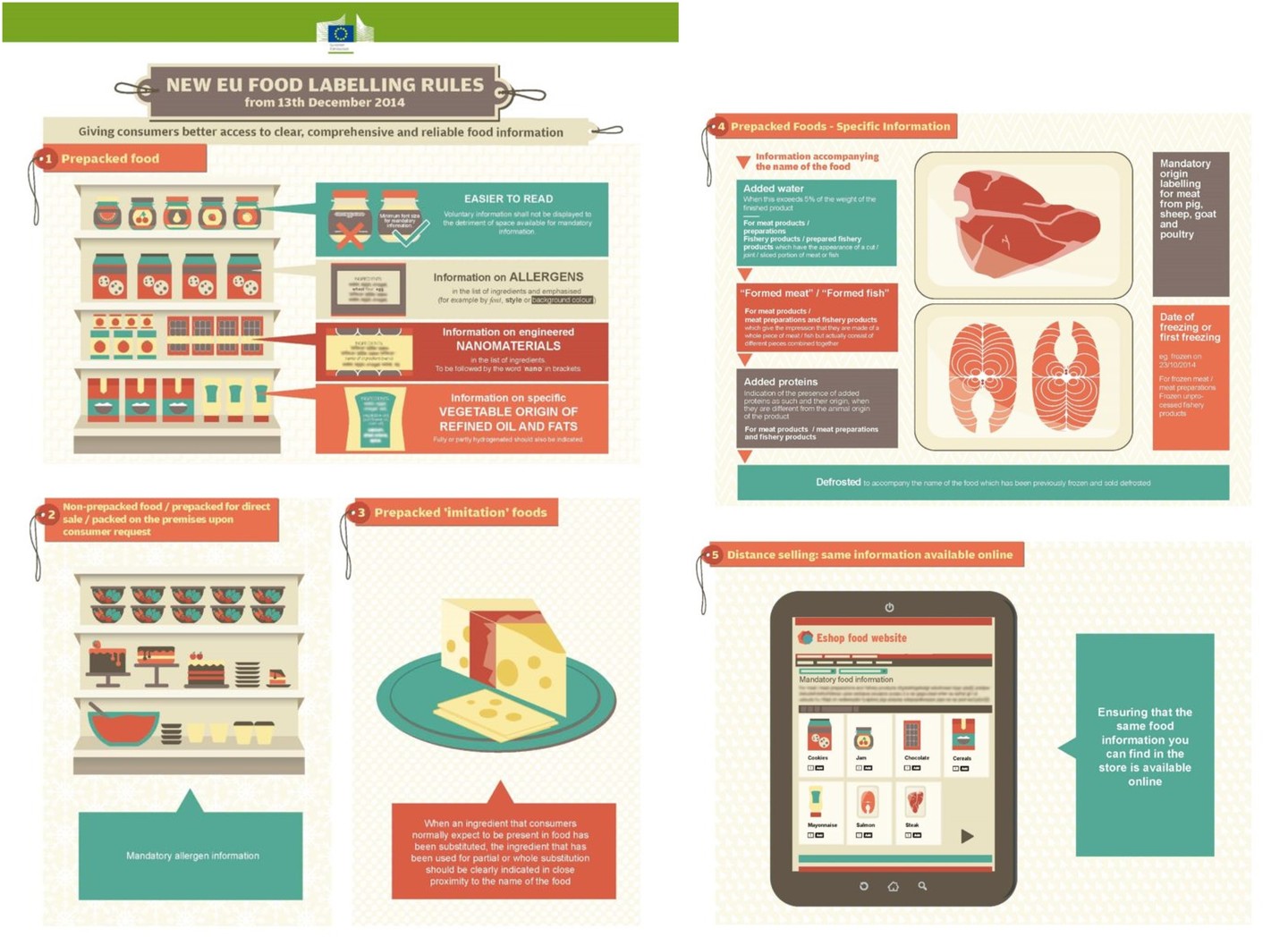article, infographic, Part 2
Food Labels – What you should know

Have you ever stopped to consider the impact of the food you eat on your body? Every bite you take has the potential to nourish or harm you. That's why food labelling is so crucial.
Let's begin by addressing the basics:
You have the right to easy access to information on food. In the EU this information is regulated by Regulation 1169/2011.
The scope of this regulation is to “achieve a high level of health protection for consumers and to guarantee their right to information” so that consumers can consciously choose their food.
An infographic published by the EU, depicts the main requirements of this regulation.
You have the right to easy access to information on food. In the EU this information is regulated by Regulation 1169/2011.
The scope of this regulation is to “achieve a high level of health protection for consumers and to guarantee their right to information” so that consumers can consciously choose their food.
An infographic published by the EU, depicts the main requirements of this regulation.
The most important information on a food label includes:
List of ingredients in descending order (e.g., if "sugar" is among the first ingredients, it indicates a high sugar content).
List of ingredients in descending order (e.g., if "sugar" is among the first ingredients, it indicates a high sugar content).
- Allergens highlighted using a different font, style, or background color in the list of ingredients. Allergens indication is also mandatory in non-prepacked food.
- Quantity of certain ingredients or categories of ingredients.
- Date of minimum durability or the 'use by' date.
- Any special storage conditions and/or conditions of use.
- Country of origin or place of provenance where applicable.
- Instructions for use, provided when it would be difficult to make appropriate use of the food in the absence of such instructions.
- Detailed nutrition declaration that provides information about energy, fat, saturates, carbohydrates, sugar, protein, and salt per 100g or 100ml. If certain vitamins and minerals are present in significant amounts (>7.5% or 15% of their Reference Intake), they must also be included in the declaration. A balanced diet needs all these components in proper amounts.
Understanding Nutrition and Health Claims:
You can also be sure that any nutrition or health claim is accurate and not misleading. This means claims like “e.g. source of vitamin C, sugar-free, low energy, high in monounsaturated fat, etc” or “e.g. vitamin C contributes to maintain the normal function of the immune system during and after intense physical exercise, etc.” are reliable.
However, some claims may be accurate but unclear. For instance, "with 20% less fat" may be accurate but is not a clear how much fat it refers to. Always consult the nutritional declaration for confirmation.
The use of nutrition and health claims is regulated by Regulation 1924/2006.
You can also be sure that any nutrition or health claim is accurate and not misleading. This means claims like “e.g. source of vitamin C, sugar-free, low energy, high in monounsaturated fat, etc” or “e.g. vitamin C contributes to maintain the normal function of the immune system during and after intense physical exercise, etc.” are reliable.
However, some claims may be accurate but unclear. For instance, "with 20% less fat" may be accurate but is not a clear how much fat it refers to. Always consult the nutritional declaration for confirmation.
The use of nutrition and health claims is regulated by Regulation 1924/2006.
Promoting a Balanced Diet and Healthy Lifestyle:
The overall purpose of these regulations (1169/2011 and 1924/2006) is the promotion of a balanced diet and a healthy lifestyle while excluding claims stating that a specific food can cure a disease.
Nutrition has a great role in a healthy lifestyle, but it cannot replace medical care. On the other hand, it is fundamental to consider not only the kind of food we eat but also the amount.
The overall purpose of these regulations (1169/2011 and 1924/2006) is the promotion of a balanced diet and a healthy lifestyle while excluding claims stating that a specific food can cure a disease.
Nutrition has a great role in a healthy lifestyle, but it cannot replace medical care. On the other hand, it is fundamental to consider not only the kind of food we eat but also the amount.
Author: Sofia Papakonstantinou, CreThiDev
References:
EUROPEAN COMMISSION - DG SANTE Labelling & Nutrition https://food.ec.europa.eu/safety/labelling-and-nutrition_en
Regulation 1924/2006 – Nutrition and health claims https://eur-lex.europa.eu/legal-content/EN/TXT/?uri=CELEX%3A02006R1924-20141213&qid=1689946176814
Regulation 1169/2011 – Food information to consumers https://eur-lex.europa.eu/legal-content/EN/TXT/?uri=CELEX%3A02011R1169-20180101&qid=1689946123839
